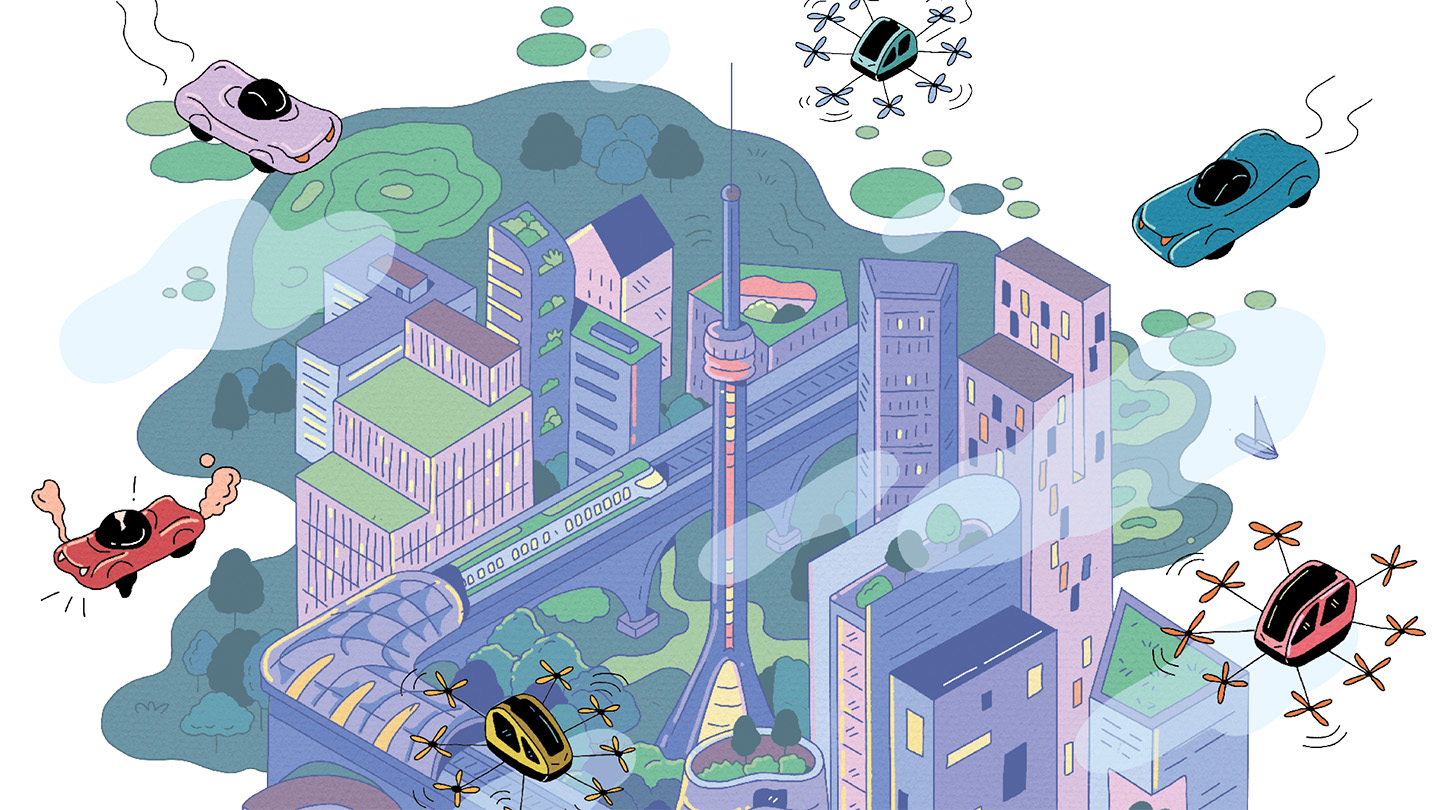Flying cars could soon become a reality
The year is 2015. “Mad scientist” Doc Brown has just brought wide-eyed teenager Marty McFly to the future in style: aboard a flying DeLorean. Although the time travelers are out of place, their mode of transportation is not. Cars zip by in the sky.
We’re now 10 years past the future envisioned in Back to the Future Part II, and still no flying cars.
But aerial automobiles, a mainstay of sci-fi and fantasy stories since the early 1900s, may soon be reality. The technology to make flying cars already exists, says Xiaosong Du, an aerospace engineer at Missouri University of Science and Technology in Rolla.
And some companies have already flown prototypes.
A real-world flying car would most likely be a cross between an airplane and a helicopter. Airplanes need runways, so it would be more practical for a flying car to take off vertically like a helicopter. Rotating blades would generate lift to bring the vehicle off the ground. “Once it’s completed takeoff,” Du says, “you can fly like a normal airplane.” Airplane wings would rotate out from the body of the craft, allowing for flight with less air resistance than a helicopter experience.
Another option is to attach propellers to a flying car’s wings. At first, the wings would be tilted upward, so that the propellers could lift the vehicle. Once the car takes off, the wings would tilt to lay flat, like those on an airplane, says aerospace engineer Pat Anderson, former director of the Eagle Flight Research Center at Embry-Riddle Aeronautical University in Daytona Beach, Fla. “It’s like a Transformer.”
Vehicles with rotating blades and propellers don’t sound much like the flying cars of science fiction. They don’t even sound much like cars. Instead, these vehicles would resemble winged military choppers like those in the Avatar movies, Anderson says. Or real-world winged choppers like the U.S. military’s V-22 Osprey.
One of the biggest barriers to people commuting in flying cars is expense. The U.S. company Alef Aeronautics, for instance, plans to sell personal cars that can drive on roads and take off into the skies. These cars look and function similarly to those in many sci-fi movies but come with a steep price tag. When they go into production sometime this year, the cars are expected to cost about $300,000 each.
For people with more modest bank accounts, a rideshare service for flying cars — something like Uber or Lyft for the skies — may be more likely, Anderson says.
Flying Ubers may become common in 10 or 20 years, Anderson predicts. First, aircraft need to be tested over and over for safety. The U.S. Federal Aviation Administration also needs to create regulations for flying cars. In October, the FAA brought the industry closer to liftoff by announcing rules on operating and piloting air taxis.
Those regulations pertain to a type of electric vehicle. Because of sustainability, “people are kind of in love with batteries,” Anderson says. But batteries are heavy, and — like those in electric cars — have a limited range.
Flying takes a lot of power, especially during takeoff. Current rechargeable lithium-ion batteries would power a flying-car ride for only 20 to 30 minutes, Du says. And while a car that runs out of charge can simply pull over, a flying car would fall out of the sky. So Du and many other researchers are trying to improve battery efficiency before flying taxis take off.
A version of this story first appeared in Science News Explores.
Source link


